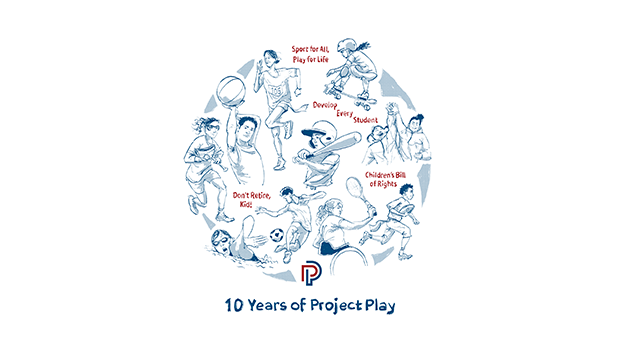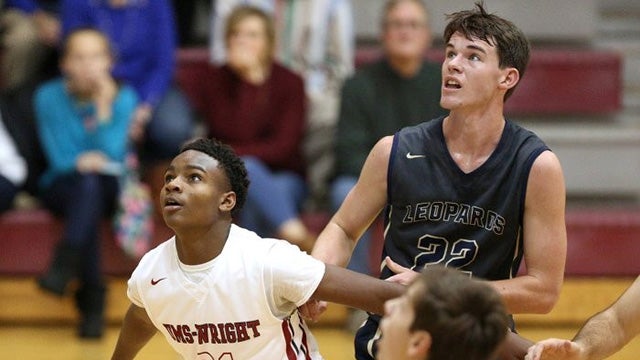There’s a boy I coached a couple seasons ago in U-9 rec soccer. He’s a good kid at heart who shows such beautiful joy in sports. He’s also prone to distraction and occasional disruption because of ADHD. Early in our soccer season, he looked like a defeated kid. He was so used to getting disciplined by teachers at school that when I sat him once for being disruptive at practice, he replied, “I know the drill,” and took a seat without complaining.
Because his parents thoughtfully told me of their son’s challenges, I intentionally focused on how I coached him considering his learning style or needs. There was some discipline at times, but I worked to build him up. By the end of the season, he had demonstrated improvement so much so that I named him a team captain, so he could feel ownership in our team’s success and failure.
I saw the boy’s dad recently at a rec basketball game. The dad was frustrated about his son’s basketball experience. The boy’s teammates kept teasing him and the coach was focused only on winning. It was heartbreaking.
“I don’t care if my son can make baskets or win games,” the dad said. “I want the coach to help my son become a good person. Just do that.”
Just do that.
Those words haunt me. Only 36 percent of youth coaches are trained in effective motivational techniques, according to 2017 data from the Sports & Fitness Industry Association. Those numbers are even lower among coaches in basketball (31 percent) and soccer (28 percent).
What if there was a way to systematically measure youth coaches by personal development of their athletes and not wins and losses? Sports provide such a unique opportunity to help youth develop physical, social, emotional and cognitive skills, yet too often this golden chance to build kids up gets squandered in our hypercompetitive sports culture.
“I think we have to redefine what the purpose of coaching is,” University of Maryland men’s soccer coach Sasho Cirovski said. “We have to go back to the teaching and caring and serving portion of coaching. Now, it’s more of a transactional job.”
On March 5, the Aspen Institute Sports & Society Program and the National Commission on Social, Emotional, & Academic Development are releasing Calls for Coaches — a new resource to help coaches promote social and emotional skills with their athletes. Based on research from the Harvard Graduate School of Education, Calls for Coaches offers simple, common-sense tips for how coaches can intentionally develop personal growth in their players:
- Know every athlete’s story: Build positive adult-youth relationships
- Establish a supportive team culture: Create a safe space that supports social and emotional skill development
- Celebrate effort: Embody effective leadership strategies that emphasize effort, autonomy and learning
- Focus on the skills that matter: Prioritize and provide opportunities for direct skill building and practice
- Be a role model: Model good character and decision-making
- Be coachable: Seek opportunities for support, training and professional development
- Join forces: Engage with families, schools and other community organizations
Calls for Coaches is potentially a game-changing playbook for coaches. But then what? Writes Calls for Coaches: “Although difficult, measuring social, emotional and cognitive skills would be valuable to coaches and youth athletes. There are not yet research-supported measurement tools that have been utilized in the context of youth sports; this represents an opportunity for exploration and development. As these tools are developed, the focus should be on helping coaches and athletes identify strengths and opportunities for improvement, recognizing that everyone develops at their own pace.”
Leaders in youth sports should take this challenge to heart. That won’t be easy. For starters, it’s incredibly difficult to find volunteer coaches and administrators these days. Some don’t intend to coach and get forced into it. Each coach has a different level of passion, time and experience, so adding some sort of evaluation component based on a child’s personal development will be challenging.
Second, the youth sports culture is so systematically rooted in the final scoreboard – the won-loss record, the all-star travel team, the high school team, and the college scholarship offer – that measuring success in some dramatically different way will face backlash. To be clear: There’s nothing inherently wrong with being competitive in youth sports, as long as it doesn’t sacrifice the larger mission of using sports as a tool to aid the social and emotional growth of children.
I don’t pretend to have the answers on how to measure youth coaches by the personal growth of their players. But the alternative – too many coaches ignoring this missed opportunity – can no longer be an option. For some thoughts, I turned to my 10-year-old son Josh’s two favorite coaches he has ever had. They’re the coaches a child begs to play for the next season.
Before each basketball season, Chris Ohm has two goals for kids of any age: Enjoy the experience and be a better player and teammate by the end of the season. Ohm gets to know the players (and parents, if possible) to gauge each child’s starting baseline in athletic and social skills. Once that’s determined, he emphasizes the growth of the player’s athletic and social skills.
Ohm’s favorite league he ever coached in was one that kept no official score. The negative energy dropped markedly from past years when the score was kept. Parent behavior on the sideline improved.
“I 100 percent believe that there is too much focus on wins and losses for players, coaches and fans,” Ohm said. “I try to impress upon the players that if they only enjoy the game if they win, then they are going to have a difficult time enjoying sports. I think there may be some merit to having a player and parent survey at the end of each season that is distributed by the league. Though there may be a few false reads in the results, the surveys should provide a general feel of the experience the family had of the season.”
Luke Grimshaw is the most creative youth coach I’ve ever known. It’s not by accident. He said he puts pressure on himself to make baseball a great experience. He intentionally prepares with outside-the-box thinking for kids to learn appropriate skills, keep the game fresh and have fun.
One time he created a video of his players acting out a scene from “The Sandlot.” On another occasion, he honored the “veteran” players who were about to age up. Grimshaw consciously pairs up kids for drills into small groups of similar levels so they can gain confidence. But he also conducts some drills in which the older players team up with the youngest, allowing the older player to learn to be a leader and the younger player to have someone to emulate.
Evaluating youth coaches based on their players’ personal growth “would take leagues to embrace that and that might be hard with volunteer coaches,” Grimshaw said. “But, in theory, coaches would improve if they received constructive feedback. They also may quit if they were discouraged. I can often see the results of my goals in the kids’ attitudes, body language and development.”
Author Linda Flanagan recently wrote a story exploring how effective sports coaches help students feel understood at school. What she found is that for better or worse, coaches affect child development.
“Unlike in the high school classroom, where learning is often abstract, students playing sports are carrying out physical activity in physical space, often in the company of others,” Flanagan wrote. “The learning is direct and clear. And the interactions with teammates often elicit powerful emotional responses at a time when the adolescent brain is highly susceptible to social cues and hierarchies.”
There are many resources to help coaches. For example, How to Coach Kids offers a free, 30-minute video on what makes a good coach. The website includes sport-specific resources and top-specific resources.
“We’ve seen the statistics,” United States Olympic Committee Director of Education Chris Snyder said at the 2018 Project Play Summit. “We are hurting more kids than we’re helping them by coaches not being trained.”
Imagine if the definition of “success” for youth in sports was clearly defined, accepted and used for evaluation. It’s not hard to find the right definition. Look to the past.
Many years ago, legendary UCLA basketball coach John Wooden created the Pyramid of Success for his players – a model that many other coaches adopted. Wooden, who viewed himself as a teacher as much as a coach, literally drew out a pyramid on a chart with words like poise, confidence, self-control, initiative and friendship. As of 2016, 56 K-12 schools through California were taking part in a youth character development program based upon Wooden’s Pyramid of Success. The kids even recited a Pyramid of Success pledge.
Wooden’s definition of success in sports should still resonate today: “Success is peace of mind, which is a direct result of self-satisfaction in knowing you made the effort to do the best of which you are capable of becoming.”
If our society truly wants to use sports as a tool to develop a child into a good person, just do that.
Jon Solomon is editorial director of the Aspen Institute Sports & Society Program. On March 5, the Aspen Institute will host a discussion on the Future of Coaching, featuring former US Secretary of Education Arne Duncan and the release of the Calls for Coaches report. Watch the event live or taped at as.pn/coaching.


